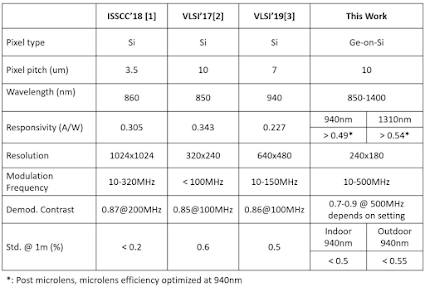Hsinchu, Taiwan, March 8th 2022 – Artilux, the leader in CMOS-based SWIR optical sensing technology, demonstrated a multi-spectral optical sensing platform compatible with NIR/SWIR vertical-cavity surface-emitting laser (VCSEL) arrays, light emitting diodes (LED), and CMOS-based GeSi (Germanium-Silicon) sensors. This compact optical sensing platform is the industry-leading solution targeted to embrace the rapidly growing TWS and wearables markets in addition to unlock diversified scenarios in digital health.
In light of the increasingly popular wide spectrum (NIR/SWIR) optical
sensing applications starting from vital sign monitoring in smartwatches
to skin detection in TWS earbuds, cost-effective and energy-efficient
optical components including LED, VCSEL, edge-emitting lasers, and SWIR
sensors have become the crucial factors to meet such rising user
demands. The widely discussed skin detection function in TWS earbuds
requires SWIR sensors to perform precise in-ear detection and to deliver
seamless listening experiences, while at the same time sustaining long
battery life. Such product requires SWIR wavelength, lower
power-consumption, lower cost, smaller size with higher sensitivity. The
announcement aims to deliver a compact and cost-effective
multi-spectral optical sensing solution, by incorporating Artilux’s
CMOS-based ultra-sensitive SWIR GeSi sensors with the capability to
integrate AFE (analog front end) and digital function into a single
chip, together with high-performance VCSEL arrays at 940nm and 1380nm
supplied by Lumentum.
Although the press release does not mention any technical specifications it may be worth referring to an ISSCC paper from 2020 published by a team from Artilux that described a Ge-on-Si technology. The paper is titled "An Up-to-1400nm 500MHz Demodulated Time-of-Flight Image Sensor on a Ge-on-Si Platform" (https://doi.org/10.1109/ISSCC19947.2020.9063107).
Press Release: https://www.artiluxtech.com/resources/news/1014


Great post! Thanks for sharing.
ReplyDeleteBeside the surely impressive work about Ge-on-Si devices, I continue to see the background light measured in the wrong way!
ReplyDeleteThe luxmeter should point at the object (that is the source of photons for the camera), and not at the light source as shown in the picture. I guess that we need to divide at least by 10 all klux claims...
Who wants to write a whitepaper on the topic? ;)
Matteo
Matteo, both methods appear to emphasize different aspects. If you keep the light meter in the scene pointing towards the camera the meter will pick up the ambient illuminance falling onto the scene. If you put the meter in to the camera plane pointing at the scene you'll average over the reflected illuminance. So when you claim that you want to see the meter in the camera plane, it appears you want to see the averaged reflected illuminance. Actually, I don't dislike the light meter in the scene plane as long as scene albedo is clear.
DeleteAnother, probably more crucial point to bring up is that illuminance by definition is in the visible range although these sensors work in the infrared. If the ambient light is sunlight and you can assume a black body radiation profile, measuring illuminance yields something one can translate to irradiance at a desired wavelength. But using artificial indoor illumination, an infrared measurement apartus and a luxmeter is absolutely not reproducible...